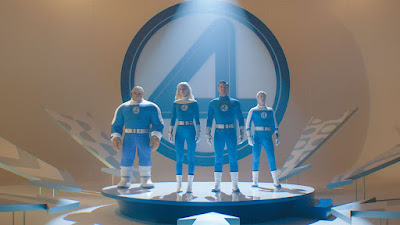Red is a potent color. It’s the color of passion, of fire. It’s primal — wilder, volatile, dangerous. It inspires. It enrages. It inflames. Tron: Ares is drenched in it. Saturated with it. So how does a film so steeped in the palette of intensity end up feeling so tepid?
This is the paradox of Tron: Ares: a film that looks like a live wire but plays like a dying ember. Where its predecessor, Tron: Legacy (2010), swam in cool, immersive blues and managed to feel as if it was it's own world; one which was grand, tactile, and alive, this latest entry in a multi-generational franchise never truly takes off.
The story follows Julian Dillinger (played by Evan Peters), the grandson of Ed Dillinger from the original Tron. Now at the helm of ENCOM, Julian oversees the creation of two advanced security programs — Ares (Jared Leto, who also serves as one of the films many executive producers) and Athena (Jodie Turner-Smith). Their mission: locate Eve Kim (Greta Lee), a scientist whose discovery could transform not just ENCOM, but the real world itself.
As the mission unfolds, Ares realizes Julian views all resources — human and digital — as expendable. His programmed neutrality begins to fracture. But his evolution, such as it is, remains conceptual rather than visceral.
The Visual Spectacle That Comes Too Late
The score, courtesy of Trent Reznor and Atticus Ross, gives the film its pulse. Hell, its life! Their signature sound — haunted, industrial, and precise — anchors the film with a sonic texture that’s unmistakable and distinctly it's own as Daft Punk's confluence of synth and classical was to Legacy. Yet even their efforts can’t compensate for a story that struggles to ignite.
Though to be fair, I wonder if implied expectation comes at play here. After all it's been fifteen (!) years between Trons Legacy and Ares (still shorter than the time between the original Tron and Legacy, which was twenty-eight (!!)). While it's argulable that Legacy itself was an extended Daft Punk video, it still had a story it could latch onto. While the first postulated what would happen if the man was in the machine, the second lived up to the title by anchoring it with a relatable generational conflict dynamic. Here, being the third entry in the franchise, Tron: Ares tries to “flip the script.” The first two films explored what happens when humans fall into the digital grid. This time, the question is inverted: What happens when AI constructs cross into the real world?
It’s a compelling idea — one implied and left hanging in the wake of Legacy. But here, the execution falters. The rules of the grid don’t map cleanly onto reality, and the film doesn’t invest in the narrative scaffolding to make that leap believable. To say more would tread into spoiler territory, but the concept deserves far more than what it receives..
Let[o] Down and The Real MVP
I’ll admit a personal bias: I don’t think much of Jared Leto as an actor. Yet, on paper, the role of Ares seems tailored to his range — or rather, his lack thereof. Ares is a security program who begins to develop independent consciousness while grappling with human emotion and empathy. He starts as a blank slate. Unfortunately, he ends as one, too. The character’s arc never quite lands on the moment of revelation it promises.
Evan Peters' Dillinger plays as Mark Zuckerberg and Nicholas Hoult's Lex Luthor's love child. Greta Lee plays the resourceful but ostensible living maguffin/damsel in distress, and the presumed human heart of the film. Her character's backstory is tailored to inspire sympathy and empathy, but her performance is such that she could have pulled it off without it. She is engaging, and tries to establish some sort of connection with Ares, with varying degrees of result depending on the scene.
Fan-favorite Gillian Anderson is squandered as Elizabeth Dillinger, reduced to little more than narrative wallpaper. And while it’s almost a tradition that you can’t have Tron without Jeff Bridges, his brief return here reads more like contractual obligation than creative spark.
However, Jodi Turner-Smith is the film’s MVP. Her Athena — designed as an equal blank slate — radiates quixotically coldly furious presence. Focused, ruthless, electric. She embodies the film’s red palette in a way the protagonist never manages to. Her fury is arresting, her precision riveting. Without her performance, this film would have little pulse at all.
A Flicker Without Flame
I tried to give this film the benefit of the doubt. I truly did. But somewhere deep in the third act, I found myself drifting — not out of fatigue, but boredom. That's never a good sign when I walked in wide awake.
Tron: Ares was supposed to be a triumphant return — a bold leap forward for a franchise built on the intersection of light and code. Instead, while it's beautiful to look at and hypnotic to hear, to borrow and paraphrase from a scribe way more talented than me, it’s a kaleidoscope of sound and fury, but ultimately signifying nothing. Tron: Ares is a triumph of polish over pulse. In a story about fire, it's the chill that lingers.





